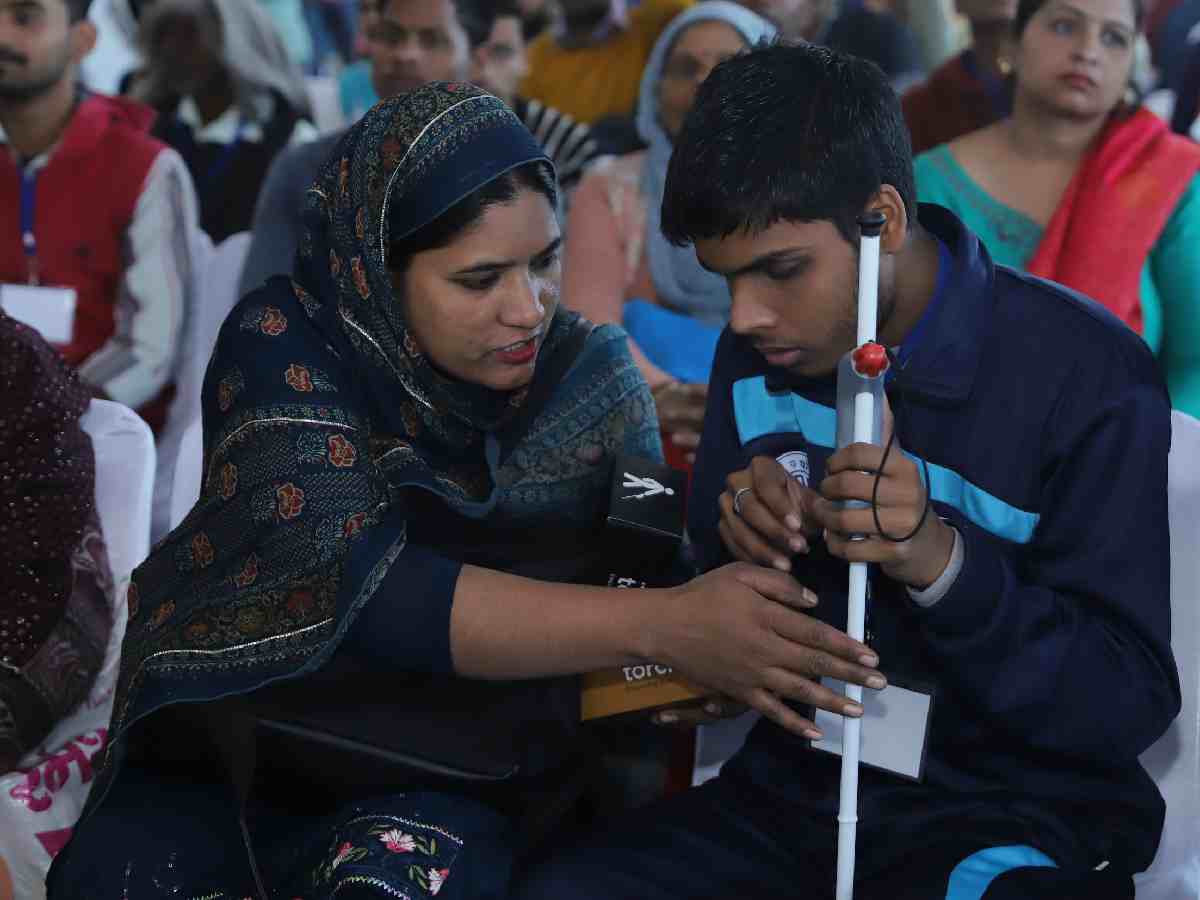The National Capital Region Transport Corporation (NCRTC) has launched an assistive aids distribution drive for differently-abled individuals residing near the Delhi-Ghaziabad-Meerut RRTS corridor.
According to a senior NCRTC official, this initiative aims to enhance their mobility, accessibility, and independence, enabling them to navigate daily life with greater ease.
The drive, organised in collaboration with the Asian Development Bank (ADB) under the Japan Fund for Prosperous and Resilient Asia and the Pacific (JFPR), marks the first distribution of assistive aids for differently-abled individuals. Officials confirmed that similar initiatives will follow.
The event took place at the Ghaziabad RRTS station, where NCRTC Director (Finance) Namita Mehrotra and Director (System & Operations) Navneet Kaushik distributed smart canes, hearing aids, and crutches to around 130 beneficiaries. According to officials, these assistive devices were selected based on a survey conducted by a team of disability experts to cater to the specific needs of individuals, ensuring effective support.
Also read: Know your Maghai paan from Sindhi and where to have them in Delhi
The initiative aims to enhance mobility and accessibility while empowering differently-abled individuals by improving their independence and employability.
Officials highlighted that the program, through the provision of assistive devices, helps recipients actively engage in society and the workforce. Enhanced access to transportation, daily activities, and workplaces enables individuals to pursue opportunities previously out of reach, allowing them to participate fully in economic and social activities.
To assist visually impaired commuters, dedicated tactile paths have been introduced at stations. These paths guide individuals along the shortest and most intuitive routes to key areas, reducing confusion and fostering independence, the official explained.
Specially designed lifts have also been installed to accommodate wheelchairs and stretchers, addressing both mobility and emergency medical needs. Ramps, multiple lifts, and escalators have been strategically placed at station entry and exit points to ensure seamless access to concourse and platform levels. These facilities aim to provide an easy and hassle-free journey for all commuters, including the elderly, children, and women.
In the Namo Bharat trains, designated seating areas are reserved for women, elderly passengers, and differently-abled individuals in every coach. Additionally, a train attendant is deployed on every train to assist commuters. These measures underscore NCRTC’s commitment to inclusivity, accessibility, and enhancing the commuting experience for everyone, officials stated.
Also read: Delhi police constable’s tragic death leaves family struggling for survival and justice
Details of the devices provided
Smart cane: A smart cane is an innovative assistive device designed to enhance mobility and independence for visually impaired individuals. Unlike traditional canes, it incorporates advanced features such as ultrasonic or infrared sensors to detect obstacles at various heights, including head level, and provides alerts through vibrations or sound cues.
Ergonomically designed to be lightweight and often foldable for convenience, smart canes offer customizable sensitivity settings and are powered by rechargeable batteries for extended use. By enabling users to navigate complex environments with confidence and safety, smart canes significantly improve accessibility and independence, making them an essential tool in inclusive transit systems.
Hearing aids: Hearing aids are small electronic devices designed to improve hearing for individuals with hearing loss, enabling them to perceive sounds more clearly and participate actively in daily life.
These devices amplify sound and are tailored to the user’s specific hearing needs, enhancing their ability to communicate and interact in various environments. Modern hearing aids come in discreet designs and are equipped with advanced features like noise reduction, directional microphones for better focus on speech, and Bluetooth connectivity for seamless integration with smartphones and other devices.
Powered by rechargeable or replaceable batteries, hearing aids are vital in promoting accessibility and inclusivity, particularly in public spaces such as transit systems, where clear auditory input is crucial for safety and convenience.





